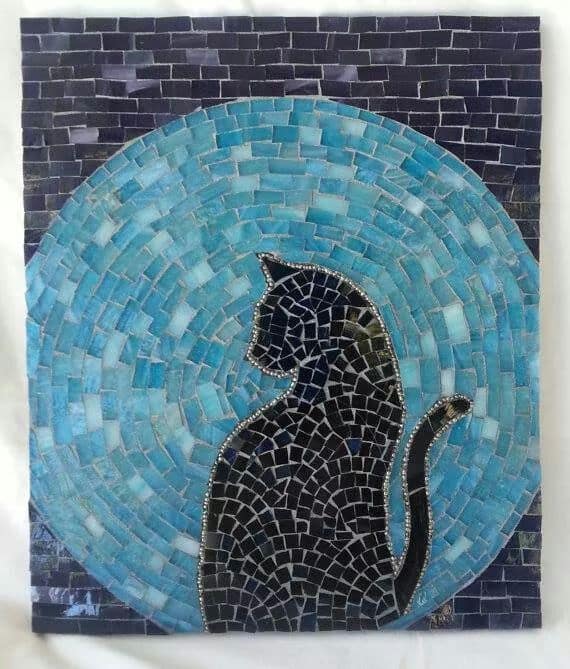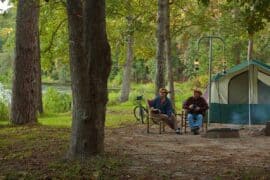Unleash Your Child’s Creativity with Mosaic Art Ideas
Hello there, marvelous moms and dazzling dads! Are you ready to dive into a world of color, texture, and creativity with your little ones? Mosaic art is not only beautiful; it’s a brilliant way to inspire imagination and develop fine motor skills. And guess what? You don’t need to be an art whiz to get started! So, go ahead and get those crafting aprons on because we’re about to explore some super fun and easy mosaic art ideas that your kids will absolutely adore!
Why Mosaic Art Is Great for Kids
Before we jump into the nitty-gritty of crafting, let’s take a moment to appreciate why mosaic art is such a fantastic activity for children.
- Creativity Boost: Mosaics offer endless possibilities in design, giving your child the freedom to express themselves however they please.
- Sensory Development: Handling mosaic materials like tiles, beans, or paper helps children explore different textures and shapes.
- Motor Skills: Picking up and placing tiny pieces requires precision and coordination, honing your child’s fine motor skills.
- Patience and Focus: Compiling a mosaic takes time and concentration, cultivating valuable life skills kids can carry into the future.
- Understanding Geometry: Mosaics are a hands-on way to introduce concepts like symmetry, patterns, and angles.
Simple Mosaic Materials You Can Find at Home
You might be thinking, “Do I need fancy supplies?” Not at all! You’ll be amazed at what everyday items can transform into a masterpiece. Let’s peek into that craft box or around the house for:
- Paper Mosaic Tiles: Colored paper, old magazines, or wrapping paper can be cut into squares and used as tiles.
- Foodie Fun: Dried beans, seeds, and even pasta are not just for soups and salads – they’re perfect for tactile mosaics.
- Nature’s Palette: Leaves, petals, and pebbles collected from your garden can create gorgeous natural art.
- Recycle and Reuse: Don’t toss out those broken CDs or eggshells – they sparkle and shine as mosaic materials.
- Sticky Situation: Contact paper can be a less messy alternative to glue for younger kiddos.
Getting Started: Setting up for Mosaic Magic
Alright, it’s preparation time! Here’s how to set the stage for a blissful crafting session:
- Create a Workspace: Cover your table with newspaper or a wipeable tablecloth to catch the bits and bobs. Arrange materials within easy reach.
- Design Time: Have your child sketch out their idea on paper first. It can be as simple or complex as they like – this is their art after all!
- Mosaic Base: Cardboard, wood, or any sturdy surface can act as the canvas for your child’s creation.
- Glue it Down: Use child-friendly glue and demonstrate how to apply small amounts to the backs of the materials.
- Patience is Key: Encourage your child to take their time, reminding them that great art isn’t rushed!
We’ve laid the foundation and now it’s time to make some stellar mosaics! Let’s get into some specific project ideas that will have your kids beaming with pride at their handmade masterpieces. But why stop at reading about them? Be sure to actually try them out and watch your little artists shine!
Mosaic Project Idea #1: Paper Plate Sunshine
Let’s turn up the brightness with a project that’s as cheerful as it is simple – a Paper Plate Sunshine.
- Materials: Paper plate, yellow and orange paper or card, glue, scissors, and a marker to draw the sun rays.
- Step-by-Step:
- Cut the paper into small squares to serve as the rays of sunshine.
- Let your child draw lines radiating out from the center of the plate to guide where to place the tiles.
- Starting at the edge, apply glue and place the yellow and orange squares along the sun rays, mixing the colors to create a warm, glowing effect.
- Fill in the center of the plate with more paper squares to complete the sunshine.
Voila! A beautiful sun that never sets, made with love and a little bit of paper. Keep this sunny spirit going as we explore more mosaic activities that will make your kiddo’s imagination shine even brighter. Stay tuned and remember, the aim is to have loads of fun while creating something wonderful together!

Five Things Parents Should Know When Preparing for Mosaic Art with Kids
- Safety First: Even though many mosaic materials are safe for kids, ensure that any sharp or breakable items are handled with care or avoided altogether. Always supervise your children during craft time, especially when they are handling smaller pieces.
- Mess Management: Mosaic art can be quite messy! Have some wet wipes and a small bin or bowl for trash on hand. It’s also a great idea to keep a damp cloth nearby to wipe sticky fingers.
- Keep it Simple: Start with basic projects that have large pieces and simple patterns. This will help your child feel successful and encouraged to try more complex designs as they grow more confident.
- Embrace Imperfections: Mosaics are as unique as the artists who create them. Celebrate the little imperfections in your child’s artwork – they add character and personal touch to the creation!
- Fuel Their Imagination: Provide a variety of materials and colors for your child to choose from. This not only stimulates their senses but also encourages them to think outside the box and come up with original designs.
Mosaic Project Idea #2: Magical Garden Stones
Next up, let’s bring some enchantment to the garden with personalized mosaic stones.
- Materials: Flat garden stones or stepping stones, an assortment of pebbles, glass beads, small tiles, waterproof glue, and grout.
- Step-by-Step:
- Choose a stone big enough for your child’s design.
- Have your child arrange their pebbles, glass beads, or tiles on top of the stone to create their magical pattern.
- Once they’re happy with the design, help them carefully glue each piece onto the stone. Ensure the glue is waterproof if the stones will be kept outdoors.
- When the glue has dried, if using grout, assist them in applying and then wiping away excess grout to reveal the beauty of their handiwork.
These charming garden treasures will add a pop of color to your outdoor space and can also serve as sweet homemade gifts from your little ones.
Mosaic Project Idea #3: A Portrait of Bits and Pieces
Now, let’s add a personal touch with a mosaic portrait, allowing your child to create a picture of someone they love using the odds and ends found around the house!
- Materials: A solid base such as canvas or thick cardboard, a range of materials for mosaic pieces (buttons, beads, fabric scraps, etc.), glue, and a picture or photograph for reference.
- Step-by-Step:
- Select a photo or have your child imagine a face they’d like to create.
- Sketch the outline of the portrait onto the base to guide the mosaic placement.
- Assist in sorting the materials by color and shape – this makes it easier for your child to find just the right piece for each part of the portrait.
- Work section by section, applying glue and sticking on materials to fill in the features of the portrait.
This activity is not only a blast, but it’s also a heartwarming exercise for your child to consider the details that make their loved ones special. Plus, the result is a masterpiece filled with sentimental value.
Mosaic Project Idea #4: Undersea Adventure Panel
Dive into the deep blue sea with this aquatic-themed mosaic panel that will brighten up any room’s decor!
- Materials: A large piece of cardboard or wood for the panel, blue shades of paper or fabric for the water, assorted materials for sea creatures (think shells for scales and sand for the ocean floor), glue, and paint for extra detail.
- Step-by-Step:
- Paint or cover the background of the panel with shades of blue to represent water.
- Encourage your child to dream up a variety of sea creatures and plants to populate their undersea scene.
- Use shells, beads, sand, and other materials to give life to each creature and plant, gluing them onto the panel.
This whimsical underwater tableau is perfect for storytelling and can stimulate conversations about marine life, conservation, and the wonders of the ocean.
Mosaic Project Idea #5: Seasonal Celebration Wreaths
Lastly, let’s celebrate the seasons with a wreath that showcases the colors and textures of spring, summer, autumn, or winter.
- Materials: A circular wreath base (can be made from cardboard), seasonal materials such as flower petals for spring, leaves for autumn, or fabric pieces for winter, glue, and ribbon for hanging.
- Step-by-Step:
- Have your child pick a season to celebrate with their wreath.
- Gather materials in color schemes representative of the chosen season.
- Begin by covering the wreath base with a layer of glue and then arranging and sticking the seasonal materials all around it.
- Once dry, tie a ribbon at the top for an easy and playful way to hang the wreath up for display.
These seasonal wreaths are not only fun to make but can become a delightful family tradition, creating a new wreath together with every changing season.
With these mosaic art ideas, you and your kids can embark on a delightful crafting journey. From creating bright paper plate sunshines to adorning your garden with magical stones and crafting personalized portraits, the possibilities for fun and learning are endless. So gather your materials, and let the artful adventure begin!
See more great Things to Do with Kids in New Zealand here. For more information see here
Disclaimer
The articles available via our website provide general information only and we strongly urge readers to exercise caution and conduct their own thorough research and fact-checking. The information presented should not be taken as absolute truth, and, to the maximum extent permitted by law, we will not be held liable for any inaccuracies or errors in the content. It is essential for individuals to independently verify and validate the information before making any decisions or taking any actions based on the articles.




